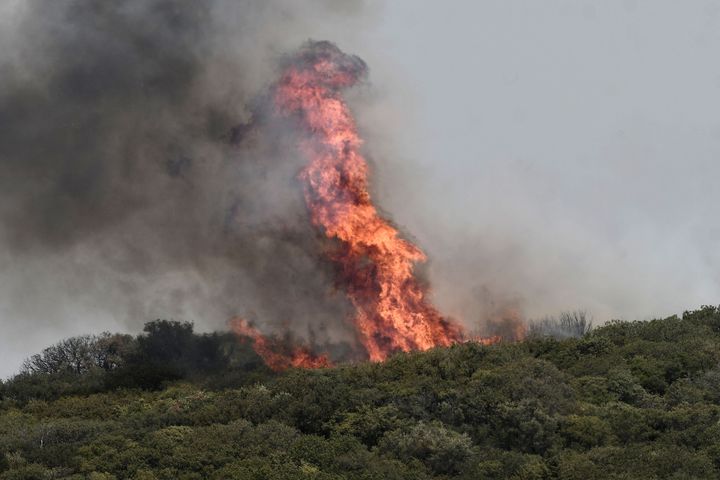
After a summer of chaotic weather events, the climate crisis has been at the forefront of a lot of people’s minds recently.
And it was a major talking point at the United Nations’ General Assembly last week, with the UN’s secretary-general Antonio Guterres warning that “humanity has opened the gates to hell” when it comes to our warming climate.
After prime minister Rishi Sunak recently dropped some of his climate pledges, concerns over the UK’s carbon emissions peaked in recent days.
So just how close are we to climate disaster, really? And what can we do about it?
Will there be a climate disaster?
No one knows what might happen next – but experts warn it’s not looking good.
The Intergovernmental Panel on Climate Change, or the IPCC, has warned the world repeatedly through its reports.
In March, it predicted that the Earth will go beyond the 1.5C threshold (compared to the pre-industrial era) in “the first half of the 2030s” because we continue to burn fossil fuels.
After we reach the 1.5C point, according to experts, catastrophic heat waves, droughts, crop depletion and species extinction will be much harder to manage.
And we’ve already warmed up by an average of 1.1C since the industrial era.
By cutting greenhouse gases in half by 2030 and cutting our carbon emissions completely by 2050 (the Net Zero target), there’s a 50% chance the Earth can stay at 1.5C.
Hoesung Lee, chair of the climate panel, said: “The pace and scale of what has been done so far and current plans are insufficient to tackle climate change. We are walking when we should be sprinting.”
Many scientists labelled this report as the “final warning” for politicians to act before the climate gets too difficult to fix.
Kaia Kosonen, climate expert at Greenpeace International, said: “This report is definitely a final warning on 1.5C. If governments just stay on their current policies, the remaining carbon budget will be used up before the next IPCC report [in 2030].”
Unfortunately, that seems to be the opposite of what many global leaders are doing.
US president Joe Biden approved a huge Alaska oil project in March, while the UK’s prime minister has defied the recommendations of his independent climate change advisers and delayed the ban on new petrol cars by five years, along with the target of eliminating gas boilers.
So is it wise for individuals to start preparing for the worst?
How are we meant to prepare?
While many environmentalists are calling on the government to act, Bill McGuire, a professor of Geophysical and Climate Hazards at University College London, told the i newspaper he has taken matters into his own hands – before, as he believes, society collapses in 2050.
He has been preparing since Glasgow’s COP26 summit in 2021, when he became frustrated by the inaction, and decided he had to prepare himself for riots, food shortages and societal collapse.
Here are the four key changes he has implemented to prepare himself for the crisis and become self-sufficient:
1. Food
The climate scientist chose to move out of London due to summer heatwaves, and now collects seeds to harvest produce on his land. The UK imports much of its food, which McGuire points out makes us vulnerable to weather changes elsewhere, so he plans on creating his own supply.
2. Water
He said he believed access to water will be a big problem, so he has installed gutters around his house to harvest rainwater.
3. Energy
McGuire has thick walls in his house to keep the heat out, as well as solar panels and a log boiler installed. As he told the i: “If we burn all fossil fuels, then we’ll likely end up with a global average temperature rise of around 16C.”
4. Community
McGuire said households can’t live in tough conditions like this on their own and added that a village of 500 people or a block of flats with 100 people would have to cooperate to survive.